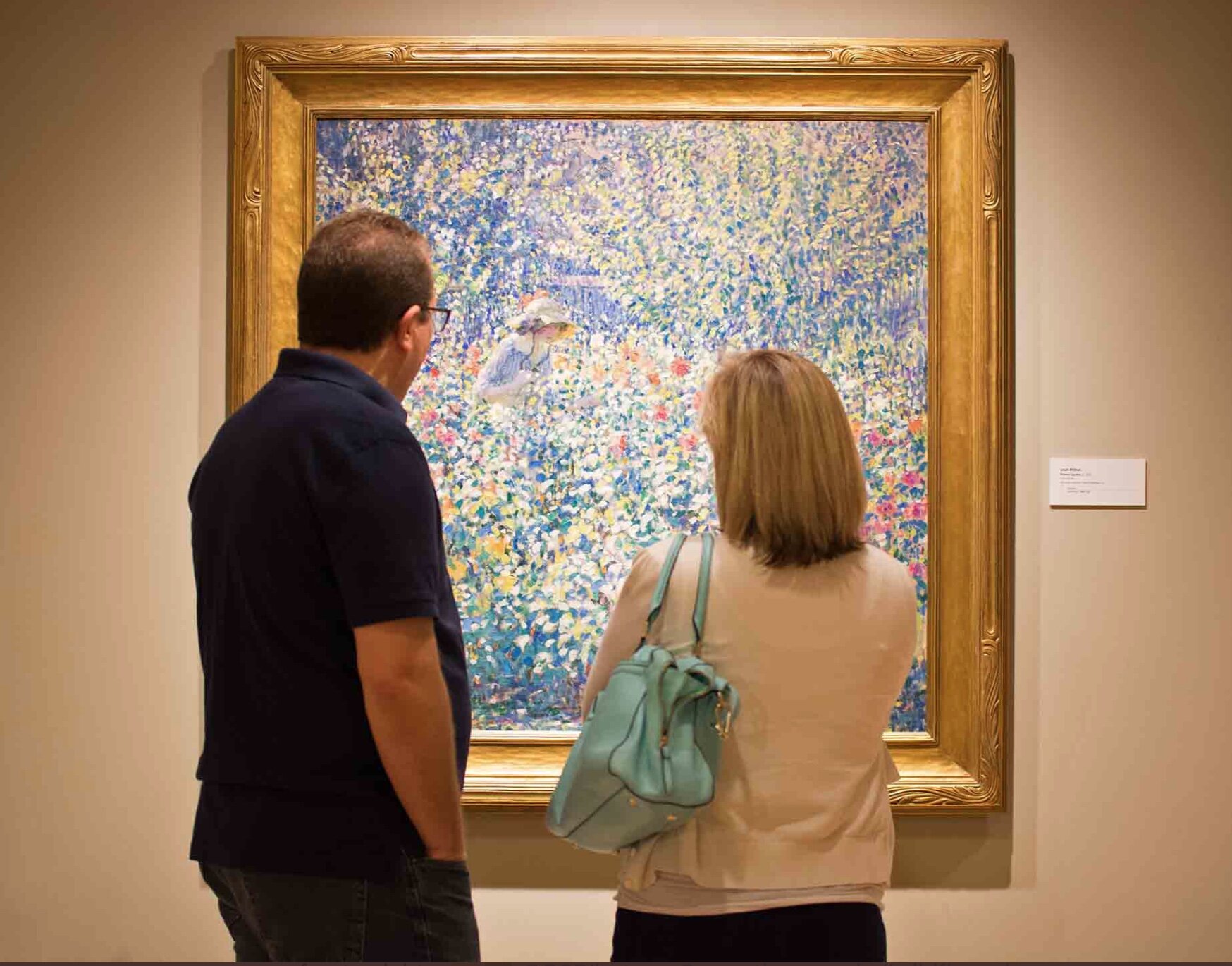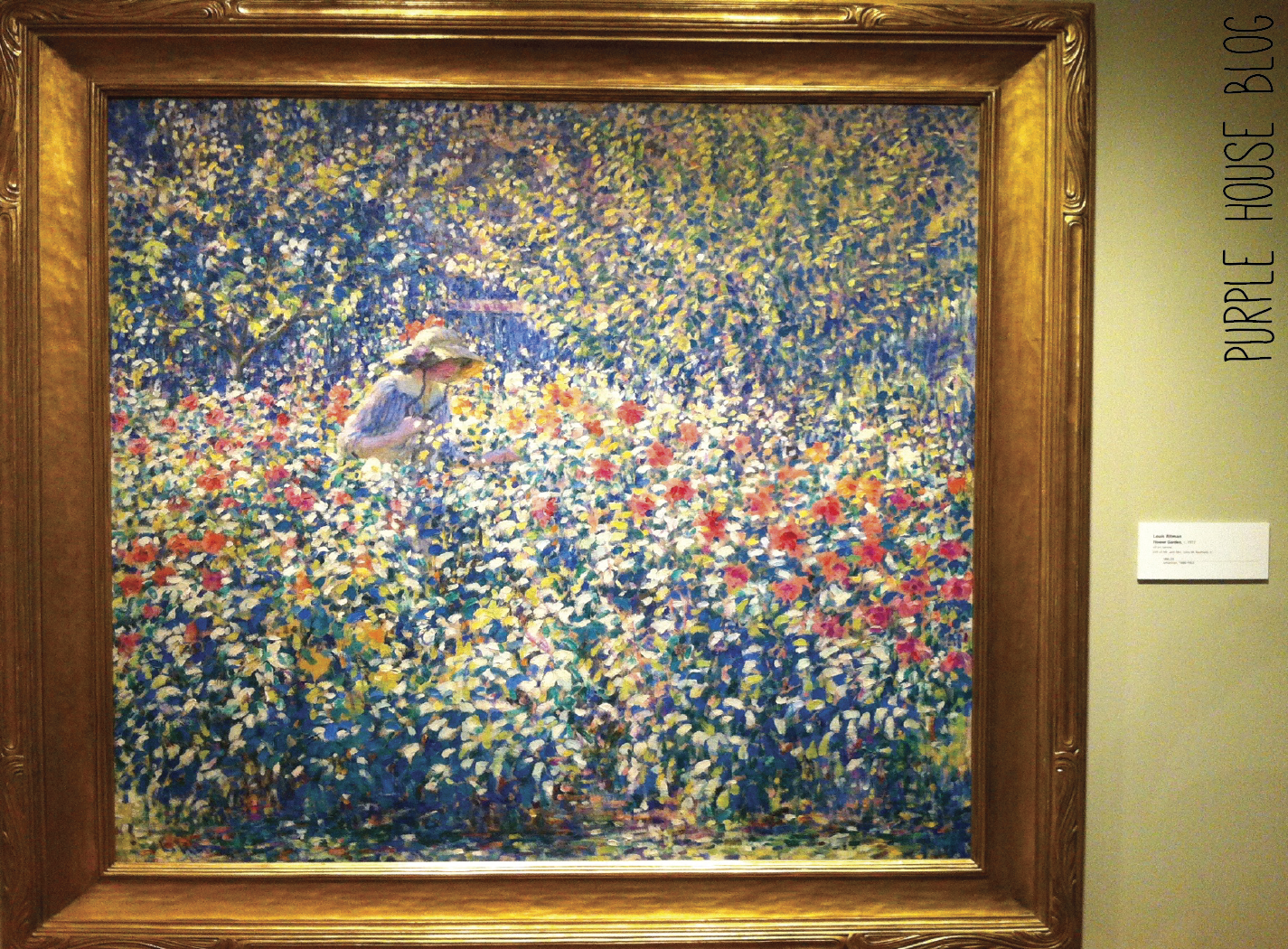




Your Custom Text Here
LOUIS RITMAN (1889–1963) Flower Garden (Jardin de Flores), c. 1913, 39-1/2" x 39-1/2", oil on canvas. Period frame, c. 1910 American Arts & Crafts painting frame; Newcomb-Macklin makers; gilded carved wood, molding width 5-1/4" "An American who studied traditional, academic art in Paris, Ritman turned his attention to modernism, becoming part of the third-wave of Impressionist artists. He worked in the scenic area of Giverny, France, painting in the gardens made famous by Claude Monet. Ritman’s paintings combine the decorative pattern of the Post Impressionists with the atmospheric effects of light that preoccupied the Impressionists in a style often called “decorative Impressionism.” This particular work is believed to have been displayed in the 1913 annual exhibition at the Pennsylvania Academy of the Fine Arts." —Painting, gift of Mr. and Mrs. John M. Redfield, Jr., 1996.259.
Flower Garden is considered one of 23 most famous art pieces at the Phoenix Art Museum. —USA Today
LOUIS RITMAN (1889–1963) Flower Garden (Jardin de Flores), c. 1913, 39-1/2" x 39-1/2", oil on canvas. Period frame, c. 1910 American Arts & Crafts painting frame; Newcomb-Macklin makers; gilded carved wood, molding width 5-1/4" "An American who studied traditional, academic art in Paris, Ritman turned his attention to modernism, becoming part of the third-wave of Impressionist artists. He worked in the scenic area of Giverny, France, painting in the gardens made famous by Claude Monet. Ritman’s paintings combine the decorative pattern of the Post Impressionists with the atmospheric effects of light that preoccupied the Impressionists in a style often called “decorative Impressionism.” This particular work is believed to have been displayed in the 1913 annual exhibition at the Pennsylvania Academy of the Fine Arts." —Painting, gift of Mr. and Mrs. John M. Redfield, Jr., 1996.259.
Flower Garden is considered one of 23 most famous art pieces at the Phoenix Art Museum. —USA Today